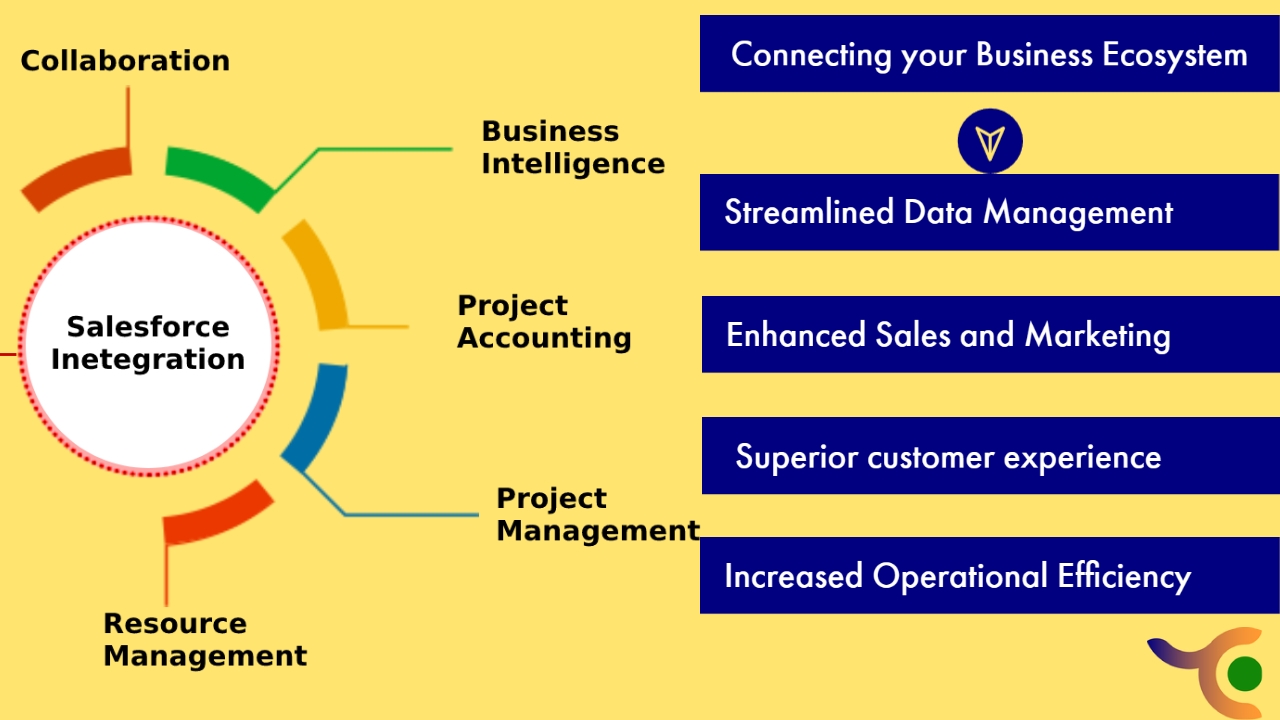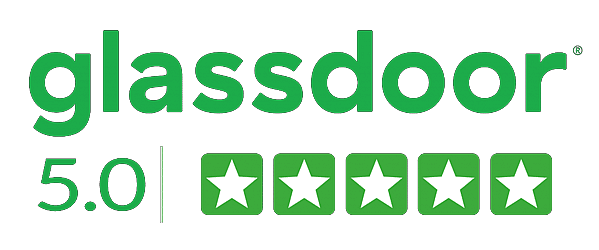Salesforce offers a wide range of integration capabilities to connect your business ecosystem and streamline your operations. By integrating Salesforce with other systems, you can achieve seamless data flow, improved collaboration, and enhanced productivity across different departments and applications.
Introduction to Salesforce Integration
Salesforce integration – Connecting Salesforce with other systems, applications, or data sources. By integrating Salesforce with external systems, organizations can streamline business processes, enhance data visibility and accessibility, and enable seamless information flow across various platforms.
Salesforce offers robust integration capabilities through its Application Programming Interfaces (APIs), tools, and connectors formerly.
These integration options allow businesses to connect Salesforce with a wide range of systems such as ERP (Enterprise Resource Planning), marketing automation, finance, human resources, e-commerce, and more.
Understanding the importance and benefits of Salesforce Integration
Integrating Salesforce can drive significant benefits for businesses, including streamlined data management, improved sales and marketing alignment, enhanced customer experience, increased operational efficiency, data-driven insights, scalability, and better collaboration.
Streamlined Data Management
Salesforce integration enables businesses to centralize their data and processes, bringing together customer information from different sources into a single platform comparatively. This integration eliminates data silos and provides a unified view of customer interactions, helping teams make informed decisions and deliver personalized experiences.
Enhanced Sales and Marketing Alignment
Integrating Salesforce with marketing automation tools, such as email marketing or lead generation platforms, enables seamless data sharing between sales and marketing teams. This integration fosters better alignment by ensuring both teams have access to real-time customer data, enabling them to coordinate campaigns, track leads, and optimize sales efforts.
Improved Customer Experience
Salesforce integration empowers businesses to deliver a superior customer experience additionally. By consolidating customer data, including purchase history, support tickets, and communication records, teams can gain a holistic view of each customer.
Increased Operational Efficiency
Salesforce integration eliminates manual data entry and redundant processes, freeing up valuable time for employees consequently. By automating data synchronization across different systems, such as CRM, marketing, and customer support, integration reduces errors and improves overall operational efficiency. Teams can focus on high-value tasks, such as nurturing leads, closing deals, and building relationships.
Data-Driven Insights
Integrating Salesforce with analytics tools unlocks valuable insights from customer data identically. Businesses can have a deeper understanding of customer behavior, preferences, and trends. These insights can drive data-driven decision-making, help identify growth opportunities, and optimize sales and marketing strategies.
Scalability and Flexibility
Salesforce is a highly scalable and flexible platform that can adapt to the evolving needs of businesses. The integration allows organizations to leverage Salesforce’s extensive ecosystem of applications and integrations, expanding functionality and customizing workflows to match specific requirements. This scalability ensures that Salesforce can grow alongside the organization and support it is changing needs.
Collaboration and Communication
Salesforce integration promotes collaboration and communication within teams significantly. By sharing real-time data and updates across departments, teams can work together more effectively, align on goals, and deliver consistent messaging to customers simultaneously. Collaboration features within Salesforce, such as Chatter, enable internal communication and knowledge sharing, further enhancing teamwork.
Planning for Salesforce Integration
The complexity of Salesforce integration can vary depending on the systems involved, data volumes, and business requirements. It’s often helpful to engage experienced Salesforce integration consultants or developers to assist with the planning and implementation process.
Identifying integration goals and objectives for Salesforce
The specific goals and objectives will depend on your organization’s unique needs, industry, and Salesforce implementation. It is essential to align these goals with your overall business strategy and seek input from stakeholders to ensure successful integration.
- Prioritize Goals
- Engage Stakeholders
- Set clear and measurable objectives
- Understand the capabilities and features offered by Salesforce and its ecosystem of apps and integrations.
- Evaluate how the integration goals align with your organization’s future growth and scalability plans.
- Establish Key Performance Indicators (KPIs)
- Develop a detailed roadmap outlining the steps, timeline, resources, and milestones for achieving the integration goals significantly.
- Continuously monitor the integration progress, measure performance against the defined KPIs, and gather feedback from users and stakeholders.
Assessing your business requirements
Start by understanding the specific business needs and challenges that the integration aims to address accordingly. This could include:
- Improving sales processes
- Enhancing customer relationships
- Optimizing data management
- Increasing operational efficiency.
Analyzing existing systems and data
When integrating Salesforce with existing systems and data, it is important to conduct a thorough analysis to ensure a smooth and effective integration.
- Identify Existing Systems: Determine the systems and applications that currently house relevant data and processes.
- Assess Data Quality: Evaluate the quality, accuracy, completeness, and consistency of the data in the existing systems.
- Understand Data Relationships: Analyze the relationships and dependencies between data in different systems.
- Define Data Mapping and Transformation: Determine how data from existing systems will be mapped and transformed to fit the data model and structure of Salesforce.
- Assess Integration Methods and Tools: Evaluate the available integration methods and tools for connecting Salesforce with existing systems.
- Plan Data Migration: Determine the approach for migrating existing data into Salesforce. Identify the data migration strategy, including whether it will be a one-time migration or a phased approach.
- Consider Security and Compliance: Analyze security and compliance requirements related to data integration.
- Evaluate System Performance: Assess the performance implications of integrating Salesforce with existing systems.
- Test and Validate Integration: Develop a comprehensive testing plan to verify the integration setup.
- Monitor and Maintain Integration: Establish monitoring and maintenance processes to ensure the ongoing success of the integration.
Integration Methods and Approaches
Salesforce offers several integration methods and approaches to connect with external systems and applications straightaway. When choosing an integration method, consider factors such as the complexity of the integration, data volume, real-time requirements, security, and the capabilities of the external system you are integrating with.
- Salesforce Connect
- Salesforce APIs
- Apex Integration Services
- Heroku Connect
- External Services
- Middleware and ETL Tools
Application Programming Interface (API) integration
Salesforce provides a wide range of APIs (Application Programming Interfaces) that enable integration with external systems. These APIs include:
- SOAP API: SOAP (Simple Object Access Protocol) API provides a standards-based web services interface for accessing and manipulating Salesforce data.
- REST API: REST (Representational State Transfer) API uses HTTP methods like GET, POST, PUT, and DELETE to access and manage Salesforce resources.
- Bulk API: Bulk API allows the users to process large volumes of data asynchronously. It’s suitable for loading or deleting large data sets evidently.
- Streaming API: Streaming API provides a push-based mechanism for receiving real-time updates of Salesforce data.
- Metadata API: Metadata API allows particularly you to retrieve, create, update, or delete Salesforce configuration metadata, such as objects, fields, and workflows simultaneously.
Salesforce Connect
Salesforce Connect allows you to integrate external data sources with Salesforce without actually moving or storing the data in Salesforce. It provides real-time access to external data through External Objects and supports OData and custom adapters for data retrieval.
Middleware and Integration Platforms
Middleware or integration platforms, such as MuleSoft, Informatica, or Dell Boomi, can be used to connect Salesforce with other systems. However, These platforms provide connectors, adapters, and pre-built integration workflows to streamline the integration process.
Future Trends in Salesforce Integration

As the Salesforce ecosystem evolves, new trends may emerge or existing trends may evolve further. Staying up to date with the latest Salesforce releases, updates, and industry developments provides the most accurate and current insights into future trends in Salesforce integration.
AI-powered integration and intelligent data mapping
AI-powered integration and intelligent data mapping can greatly enhance Salesforce integration by automating complex data mapping tasks, reducing manual effort, and improving overall data accuracy and quality.
- AI algorithms can analyze the structure and semantics of data sources, such as databases or APIs, and intelligently map them to corresponding Salesforce objects and fields.
- AI algorithms can analyze the data attributes from different sources and suggest the best matches for Salesforce fields.
- AI-powered integration can leverage machine learning techniques to identify and merge duplicate records within Salesforce.
- AI-powered integration can automate routine tasks and workflows within Salesforce.
- AI-powered NLP capabilities can be integrated with Salesforce to enable natural language-based querying and interaction.
- Even though, this allows users to search, update, or retrieve information from Salesforce using voice commands or conversational interfaces, making the integration more intuitive and user-friendly.
Integration with emerging technologies (e.g., the Internet of Things)
- Integrating IoT devices with Salesforce allows you to collect real-time data from sensors, machines, and other connected devices.
- By integrating IoT data into Salesforce Service Cloud, you can enable proactive customer service.
- IoT integration enables predictive maintenance, where connected devices monitor their own performance and send alerts when maintenance is required.
- IoT integration allows you to create personalized and connected customer experiences.
- Integrating IoT with Salesforce Workflow and Process Builder tools enables the automation of business processes based on real-time data.
- Salesforce acts as a central hub for consolidating and visualizing data from multiple sources, including IoT devices.
Automation and workflow optimization
Automation and workflow optimization are crucial aspects of Salesforce integration that can significantly improve sales processes and productivity.
Data synchronization
Salesforce integration allows you to connect various systems and applications to ensure seamless data synchronization. By automating data transfers between systems, you can eliminate manual data entry, reduce errors, and ensure that your Salesforce records are always up to date. This integration can be achieved through APIs, middleware, or indeed specialized integration tools.
Lead management and routing
Implementing automation in lead management can streamline the process of capturing, qualifying, and distributing leads to the appropriate sales representatives identically. Using Salesforce’s workflow rules and processes, further, you can automate lead assignments based on criteria such as geography, industry, or lead source, ensuring leads are promptly and accurately routed.
Opportunity and sales process automation
Salesforce provides powerful automation tools like Process Builder and Workflow Rules that can be leveraged to automate sales processes. However, You can create automated workflows that trigger specific actions or notifications based on predefined conditions. For example, you can automatically update opportunity stages, send follow-up emails, or schedule tasks for sales reps when certain milestones are reached.
Quote and proposal generation
Integration with tools like CPQ (Configure, Price, Quote) enables automation of the quote and proposal generation process. With CPQ integration, firstly you can automatically pull product and pricing information from Salesforce, apply business rules for discounts and configurations, and generate professional-looking quotes and proposals following with minimal manual effort.
Approval processes
Salesforce’s approval processes allow you to automate the approval of various records, such as opportunities, quotes, or contracts. You can define approval criteria, assign approval steps, and set up email notifications to approvers. This automation ensures that sales-related activities follow the defined approval hierarchy, saving time and reducing bottlenecks.
Task and activity management
Salesforce’s task and activity management features can be automated to streamline sales activities. e.g. you can automatically create tasks for follow-up calls or meetings based on predefined triggers like lead conversion, opportunity stage change, or specific date/time criteria. Automated reminders and notifications must be set up to keep sales reps on track explicitly.
Reporting and analytics
Integrating Salesforce with analytics platforms or business intelligence tools allows you to automate data extraction, transformation, and visualization for comprehensive reporting and analytics. In fact, you can schedule automated reports and dashboards to be generated and distributed to stakeholders, providing real-time insights into sales performance, pipeline metrics, and forecasting.
By leveraging automation and optimizing workflows within Salesforce integration, businesses can improve sales efficiency, reduce manual effort, enhance data accuracy, and enable sales teams to focus on high-value activities.
It is important to carefully plan and design automation processes subsequently to align with your specific sales processes and objectives, ensuring that the implemented automation supports your business goals effectively.
Conclusion
In conclusion, Salesforce integration is a powerful solution for connecting your business ecosystem correspondingly. By integrating Salesforce with various systems, applications, and data sources, you can streamline your operations, improve efficiency, and gain a unified view of your customer data.
Are you ready to make your business thrive? It’s time to embrace TCI and our Salesforce integration which connects your entire business ecosystem for improved efficiency and growth.
Don’t wait any longer—take action now join hands with TCI and harness the power of Salesforce integration to transform your business ecosystem into a seamless and efficient operation altogether. Your customers, employees, as well as the bottom line, will thank you.


